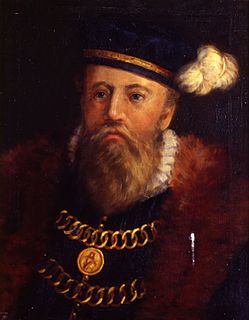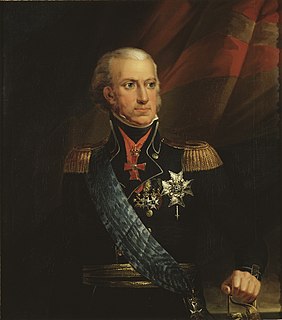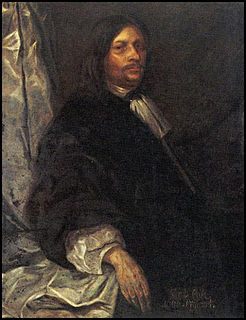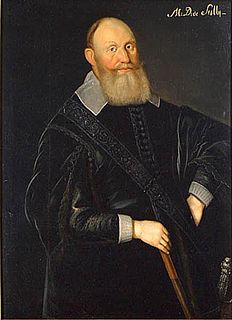 W
WChief of Navy is the most senior appointment in the Swedish Navy. The position Chief of Navy was introduced in 1936 and the current form in 2014.
 W
WAdmirals of Sweden have existed since 1522.
 W
WJakob Tordsson Bagge was a Norwegian born, Swedish admiral and nobleman.
 W
WBaron Klas Hansson Bjelkenstjerna was a Swedish naval officer and civil servant.
 W
WCharles XIII, or Carl XIII,, was King of Sweden from 1809 and King of Norway from 1814 to his death. He was the second son of King Adolf Frederick of Sweden and Louisa Ulrika of Prussia, sister of Frederick the Great.
 W
WLorentz Creutz was a Swedish friherre, government administrator, county governor (landshövding) of Kopparberg County (1655–62), member of the Privy Council and supreme commander of the Swedish navy for a few months in 1676.
 W
WCount Carl August Ehrensvärd was a Swedish naval officer, painter, author, and neo-classical architect.
 W
WClas Larsson Fleming was an Admiral and administrator involved in the development of a formal management structure for the Royal Swedish Navy under King Gustav II Adolf and Queen Christina. He is remembered as one of the ablest administrators in the history of the Swedish navy, and is in many ways a typical example of the type of aristocrat who served the Swedish Crown during the period of Sweden's imperial expansion.
 W
WBaron Carl Carlsson Gyllenhielm was a Swedish soldier and politician. He was made a baron (friherre) in 1615, appointed Field Marshal in 1616, Privy Councilor in 1617, Governor General of Ingria in 1617 and served as Lord High Admiral from 1620 until his death.
 W
WCount Gustav Horn af Björneborg was a Finnish nobleman of the Swedish Empire, military officer, and Governor-General. He was appointed member of the Royal Council in 1625, Field Marshal in 1628, Governor General of Livonia in 1652 and Lord High Constable since 1653. In the Thirty Years' War (1618–1648), he was instrumental as a commander in securing victory at the Battle of Breitenfeld, in 1631. He was High Councillor of the realm in 1625, elevated to the rank of field marshal in 1628, and sometimes commander-in-chief of Swedish forces in Germany during Thirty Years' War. After the war, he served as Governor-General of Livonia 1652, President of War department and Lord High Constable in 1653. In 1651, Queen Christina created him Count of Björneborg.
 W
WHenrik Horn was a Swedish Nobleman (friherre), Admiral and member of the Privy Council of Sweden.
 W
WBaron Klas Kristersson Horn was a Finnish born, Swedish nobleman and Naval Admiral who fought for Sweden in the Northern Seven Years' War of 1563–1570.
 W
WGabriel Bengtsson Oxenstierna af Korsholm och Wasa, 1st Count of Korsholma and Vaasa, Finnish: Gabriel Pentinpoika Oxenstierna, was a Swedish statesman, jurist and diplomat.
 W
WCarl Georg Siöblad was a Swedish naval officer who served as Governor of Malmöhus County and Blekinge County
 W
WErik Carlsson Sjöblad was a Swedish governor, admiral, and baron.
 W
WCount Gustaf Otto Stenbock was a Swedish soldier and politician.
 W
WOlof Strömstierna (1664–1730) was a Swedish naval officer and admiral. He was born as Olof Knape but became ennobled under the name Strömstierna in 1715.
 W
WClaes Johansson Uggla was a Swedish military officer of the 17th century, who served in both the army and the navy, reaching the rank of Admiral before he was killed in action during the naval Battle of Öland.
 W
WHans Wachtmeister af Johannishus, was admiral general of the Swedish Navy and advisor to King Charles XI of Sweden and King Charles XII of Sweden. He served in the Scanian War of 1675–1679 and during the following twenty years of peace worked to build up the Swedish Navy. When the Great Northern War began in 1700 he was able to take his fleet to sea in good condition.